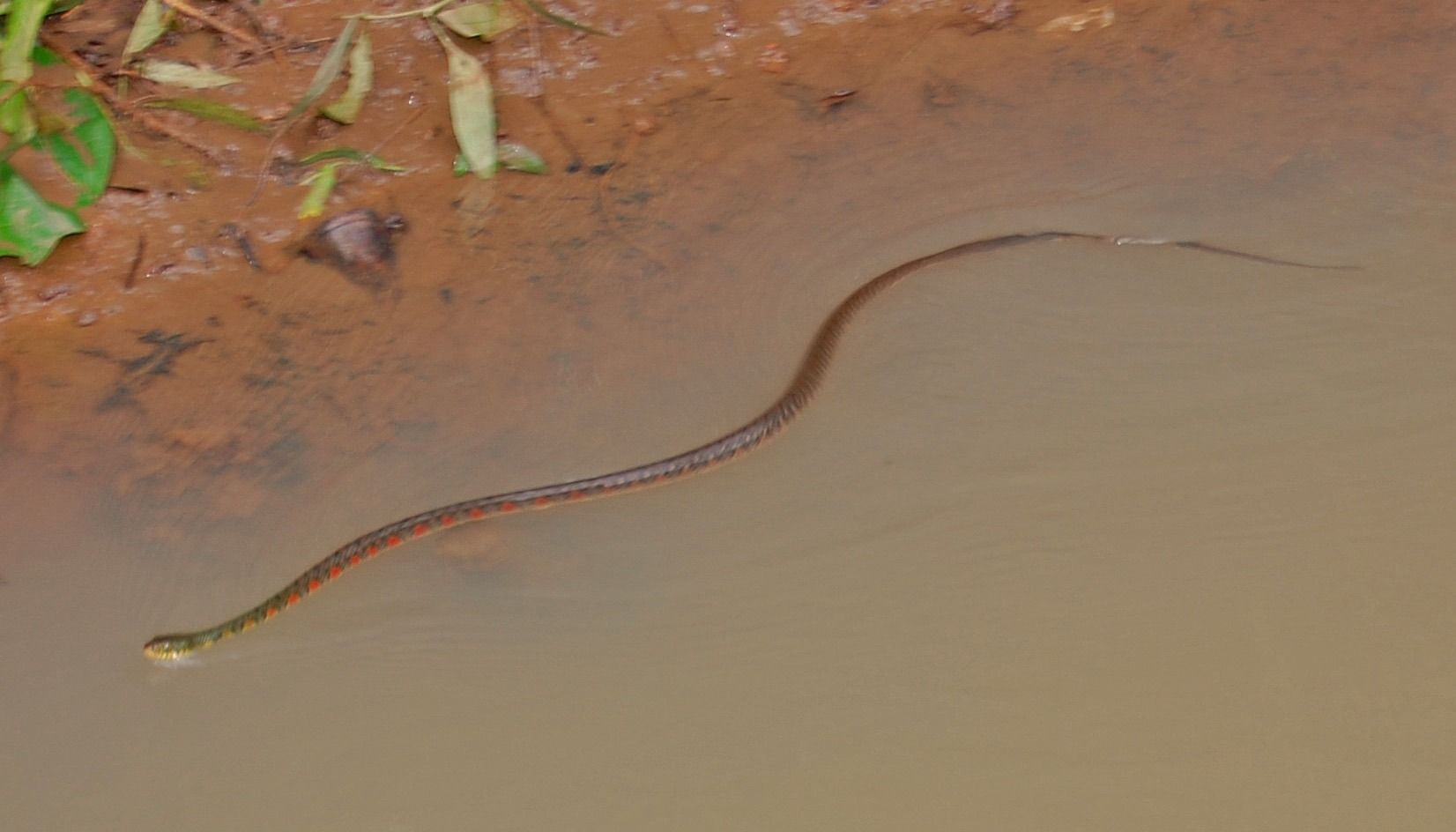| Taxon ID: 57,713 Total records: 39,143 | ||||||||||||||
Xenochrophis trianguligerus
Country
| Country | Myanmar |
|---|---|
| Continent Ocean | Asia |
Classification
| Kingdom | Animalia (COL) |
|---|---|
| Phylum | Chordata (COL) |
| Class | Reptilia (COL) |
| Order | Squamata (COL) |
| Family | Colubridae (COL) |
Taxonomy
| Genus | Xenochrophis | Reference | |
|---|---|---|---|
| SubGenus | Vernacular Name | ||
| Species | trianguligerus | IUCN Threat Status-Year | Least Concern, 2012 |
| SubSpecies | Nat'l Threat Status-Year | Not Evaluated, 2000 | |
| Infraspecies | Reason for Change | ||
| Infraspecies Rank | CITES | ||
| Taxonomic Group | Reptiles | Native Status | Native |
| Scientific Name Author | Boie, 1827 | Country Distribution | Myanmar |
| Citation | Description | Geographic Range [top]
Range Description: This species occurs from the Nicobar Islands (India), Myanmar and Thailand southward through island Southeast Asia as far east as Ternate, Indonesia. It occurs disjunctly in southern and central Viet Nam, and in western Cambodia (Smith 1943, David and Vogel 1996, Stuebing and Inger 1999, Stuart and Emmett 2006, Wogan et al. 2008, Nguyen et al. 2009). A record from Tam Dao, northern Viet Nam (Orlov et al. 2000) seems unlikely and has not been confirmed (Q. T. Nguyen pers. comm. September 2011).
Countries occurrence:
Native:
Brunei Darussalam; Cambodia; India (Nicobar Is.); Indonesia; Malaysia; Myanmar; Singapore; Thailand; Viet Nam
Additional data:
? Lower elevation limit (metres): 178
? Upper elevation limit (metres): 1350
Range Map: Click here to open the map viewer and explore range.
Population [top]
Population: This snake is common in riparian habitats in Thailand and Peninsular Malaysia between 200 and 700 m asl., and is also common in Sumatra and Borneo (David and Vogel 1996, Stuebing and Inger 1999). It thrives in rice fields and so the global population may be increasing.
Current Population Trend: Increasing
Additional data:
? Population severely fragmented: No
Habitat and Ecology [top]
Habitat and Ecology: This species occurs around small streams, ponds, and swamps in primary forest, the edges of wet fields, and villages. It occurs from lowlands up to 1,350 m elevation. The snake feeds on frogs, tadpoles, and frogspawn. Females lay 5-8 eggs (Stuebing and Inger 1999). In Myanmar it has been collected from coastal rainforest at approximately 178 meters above sea level.
Systems: Terrestrial; Freshwater
Use and Trade [top]
Use and Trade: There are no reports of this species being utilized.
Threats [top]
Major Threat(s): There are no apparent threats to this species, as it is tolerant of and indeed thrives in human-modified environments, especially rice fields.
Conservation Actions [top]
Conservation Actions: No species-specific conservation measures are in place. Field surveys are needed to clarify this snakes geographic distribution in Cambodia and Viet Nam.
Citation: Wogan, G. & Chan-Ard, T. 2012. Xenochrophis trianguligerus. The IUCN Red List of Threatened Species 2012: e.T192034A2031113. http://dx.doi.org/10.2305/IUCN.UK.2012-1.RLTS.T192034A2031113.en. Downloaded on 20 February 2017.
Disclaimer: To make use of this information, please check the |
|
| Source |
Record Level
Growth Parameters
| Temperature | 0 | Observed Weight | 0 |
|---|---|---|---|
| Sex | Previous Catalog Number | ||
| Life Stage | Relationship Type | ||
| Preparation Type | Related Catalog Item | ||
| Individual Count | 0 | GML Features | |
| Observerd Individual Count | 0 | Notes |
Collecting Event
Images
|
Additional Info
Synonyms To Manage Synonyms for Xenochrophis trianguligerus, click this link: Synonyms. |
Fowlea peguensis Theobald, 1868 ¦ Natrix punctulata Smith, 1943 ¦ Nerodia punctulata Wall, 1923 ¦ Tropidonotus punctulatus Günther, 1858 ¦ |
Common Names To Manage Common Names for Xenochrophis trianguligerus, click this link: Common Names. |
|
Localities To Manage Localities for Xenochrophis trianguligerus, click this link: Localities. |
Species Record Details Encoded By:
Carlos Aurelio Callangan
|
Species Record Updated By:
Carlos Aurelio Callangan
|

